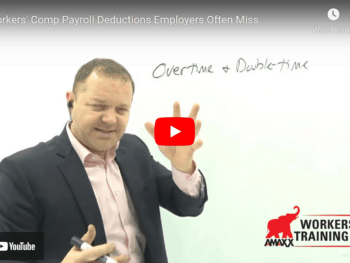Several changes in the work comp law in recent years have merged to create unexpected consequences for employers. First, permanent partial disability claims have new rules regarding what becomes of the reserves. Second, “caps” have been placed on permanent partial disability claims which limit the number of lifetime weeks of disability, based on the degree of loss of wage earning capacity. Third, the law regarding disposition of reserves does NOT apply to self-insured employers.
Henceforth, when a worker is found to be permanently partially disabled the reserves on the claim, instead of remaining with the carrier, must be transferred to the Aggregate Trust Fund. The reserves can be over $300,000. This can be avoided IF the carrier settles with the worker within the sixth months after a finding of permanency is made.
“Caps”, which limit the total number of weeks of benefits, seem to hold down reserves on smaller claims. But, they also result in far fewer settlements within the six month period – essentially creating a large fund for the state, not the carrier, since settlements would seldom be worth the effort of pursuing.
Finally, an employer can avoid the consequences of the new laws by becoming self-insured.
Past experience has shown that when the state has a financial interest in the outcome – as it does when it is the holder of substantial funds – judges tend to make decisions which gradually transfer more and more funds to control by the state. This was precisely the position taken by carriers in opposing the state borrowing reserves of the State Insurance Fund in 1982. And again, unsuccessfully, in a recent federal lawsuit to block the new rules.
But who pays? The reserves are taken from the carrier but the transfer will be passed on to the employer in the form of a higher experience modifier – unless. . . . Unless the employer is self-insured, in which case none of this applies. (workersxzcompxzkit)
It can be seen there will be a significant movement to self-insurance, either individually or through group self-insurance. Subjecting the self-insureds to the same rules is unlikely since all NY counties and nearly all towns, villages and school districts are self-insured.
Author: Attorney Theodore Ronca is a practicing lawyer from Aquebogue, NY. He is a frequent writer and speaker, and has represented employers in the areas of workers' compensation, Social Security disability, employee disability plans and subrogation for over 30 years. Attorney Ronca can be reached at 631-722-2100.
Podcast/Webcast: How To Prevent Fraudulent Workers' Compensation Claims Click Here http://www.workerscompkit.com/gallagher/podcast/Fraudulent_Workers_Compensation_Claims/index.php
We accept articles about WC cost containment. Contact us at: [email protected].
FREE WC IQ Test: http://www.workerscompkit.com/intro/
WC Books: http://www.reduceyourworkerscomp.com/workers-comp-books-manuals.php
TD Calculator: www.reduceyourworkerscomp.com/transitional-duty-cost-calculator.php
WC Calculator: http://www.reduceyourworkerscomp.com/calculator.php
WC Books: http://www.reduceyourworkerscomp.com/workers-comp-books-manuals.php
TD Calculator: www.reduceyourworkerscomp.com/transitional-duty-cost-calculator.php
WC Calculator: http://www.reduceyourworkerscomp.com/calculator.php
Do not use this information without independent verification. All state laws vary. You should consult with your insurance broker or agent about workers' comp issues.
©2009 Amaxx Risk Solutions, Inc. All rights reserved under International Copyright Law. If you would like permission to reprint this material, contact [email protected]













